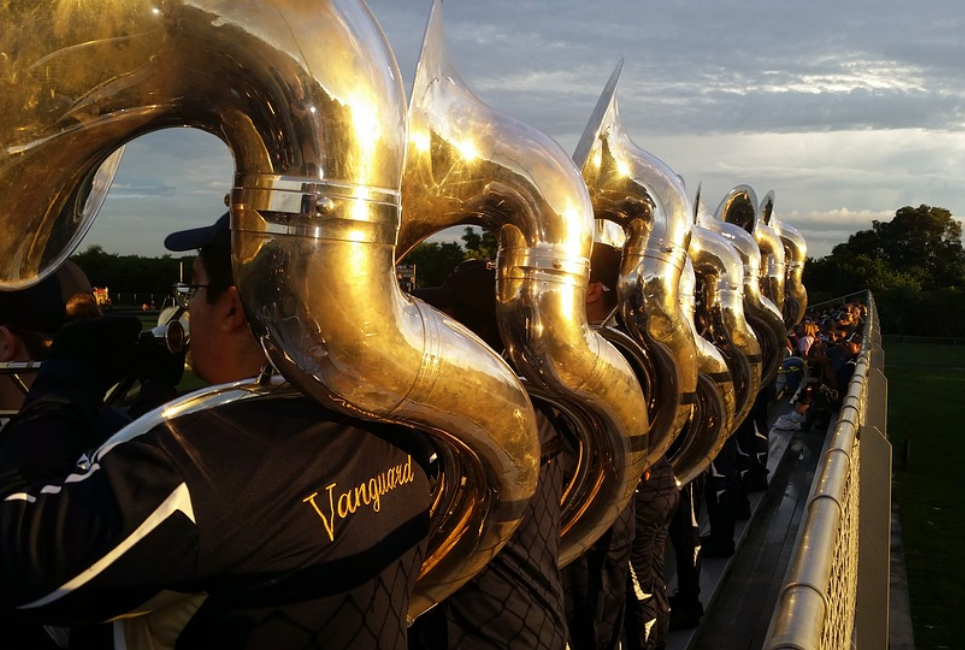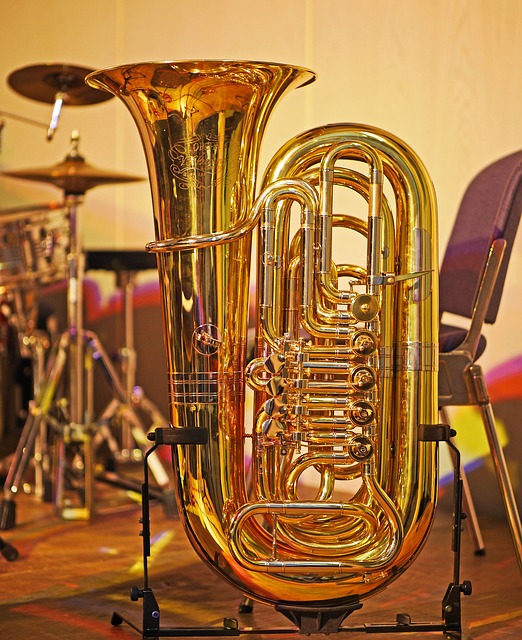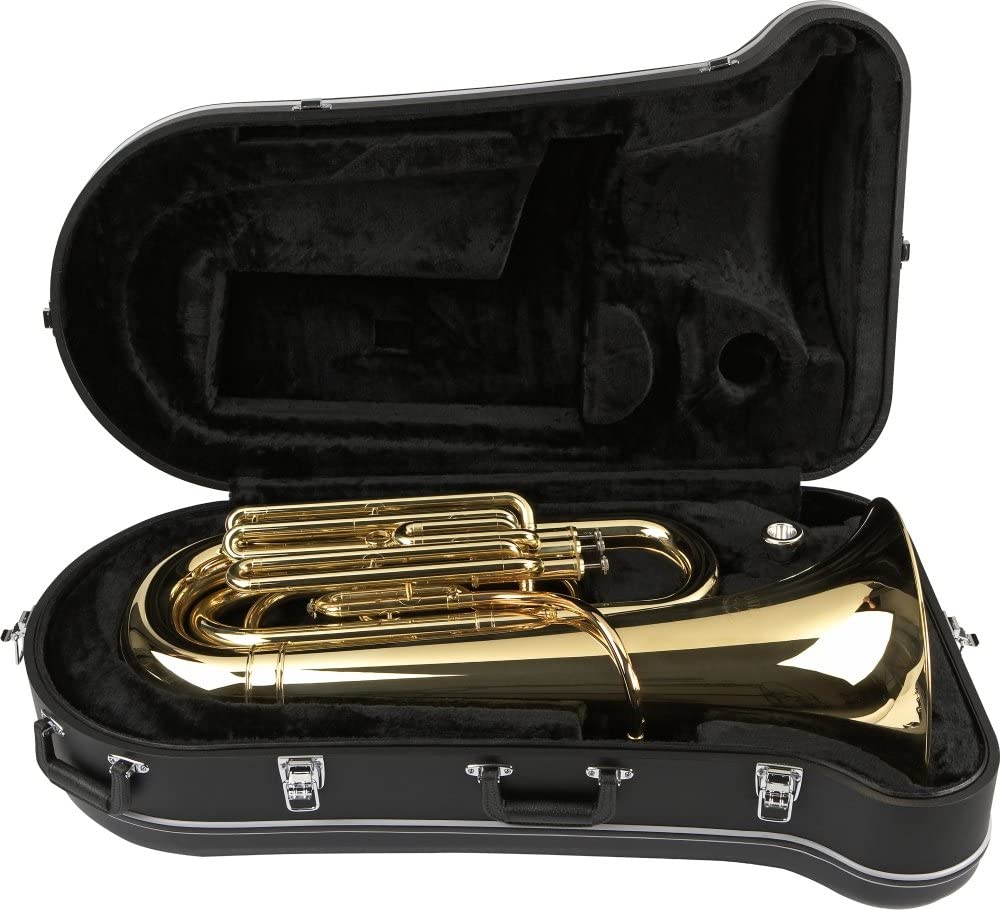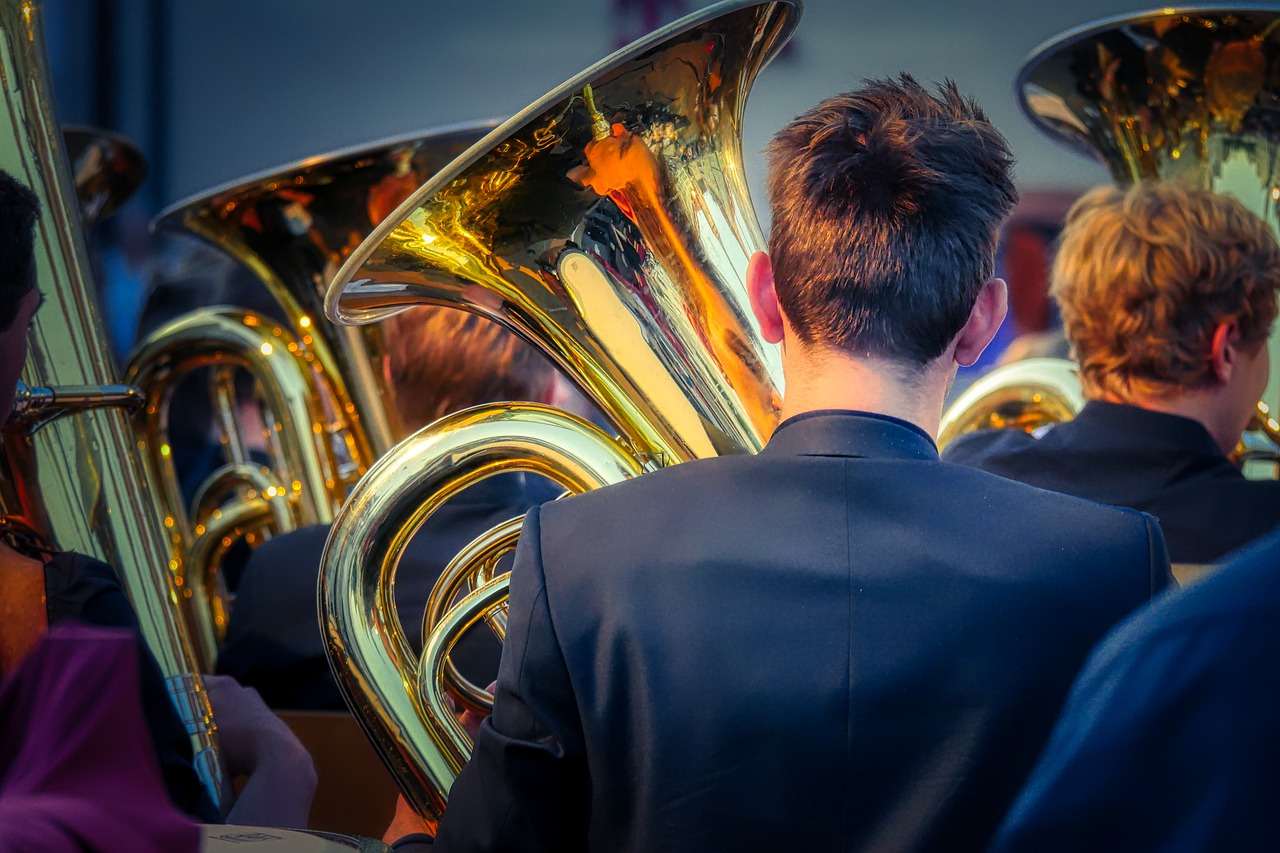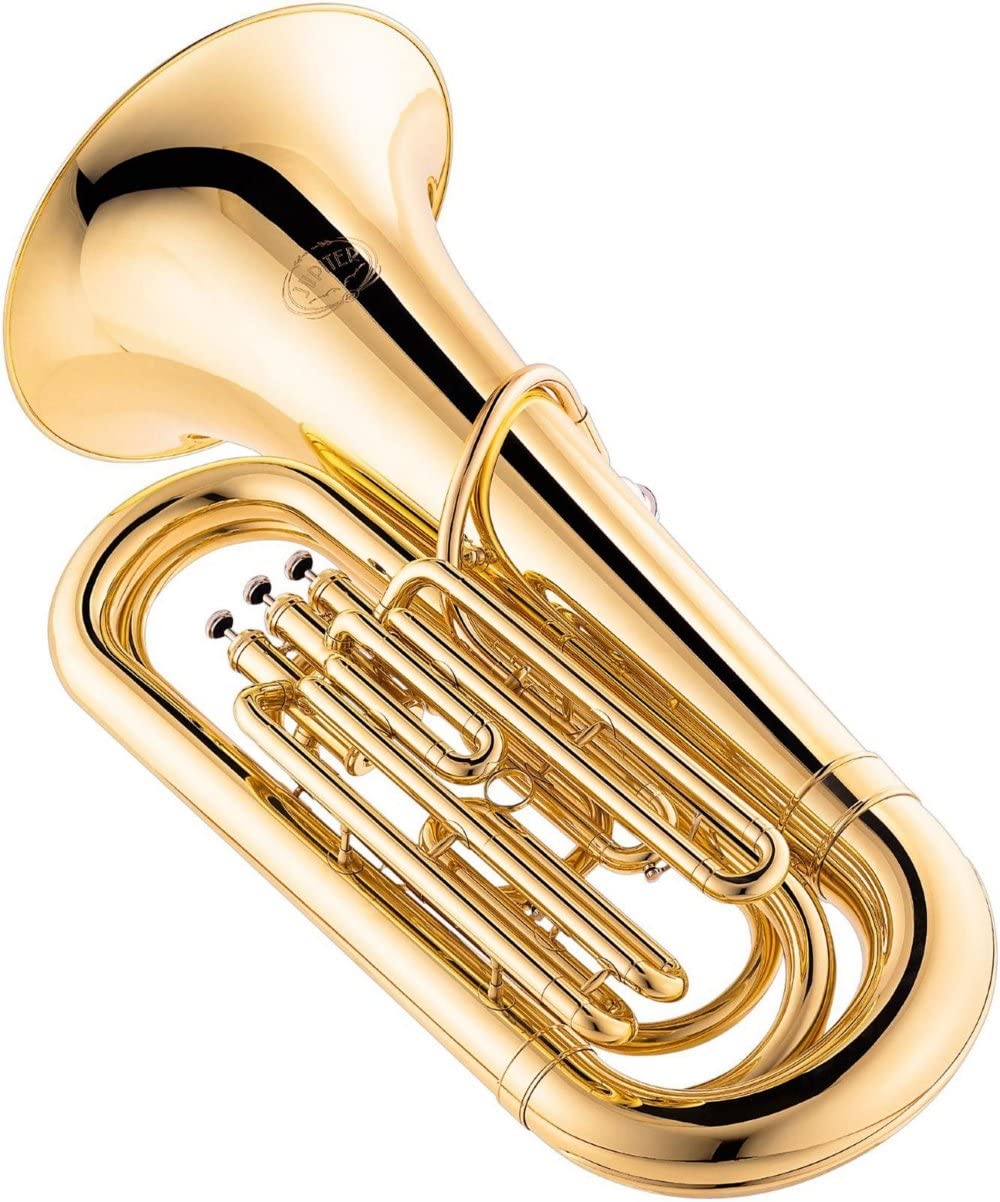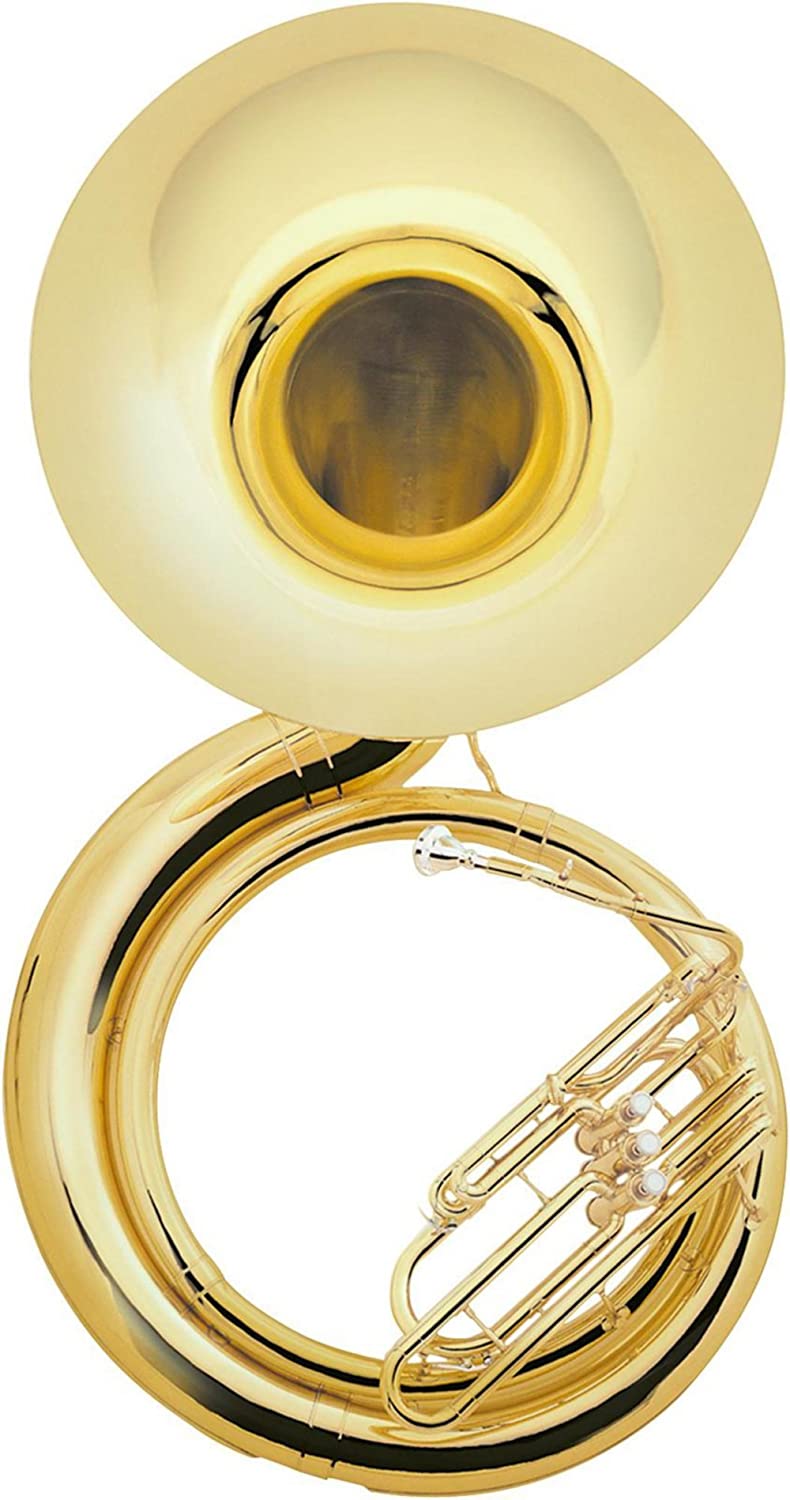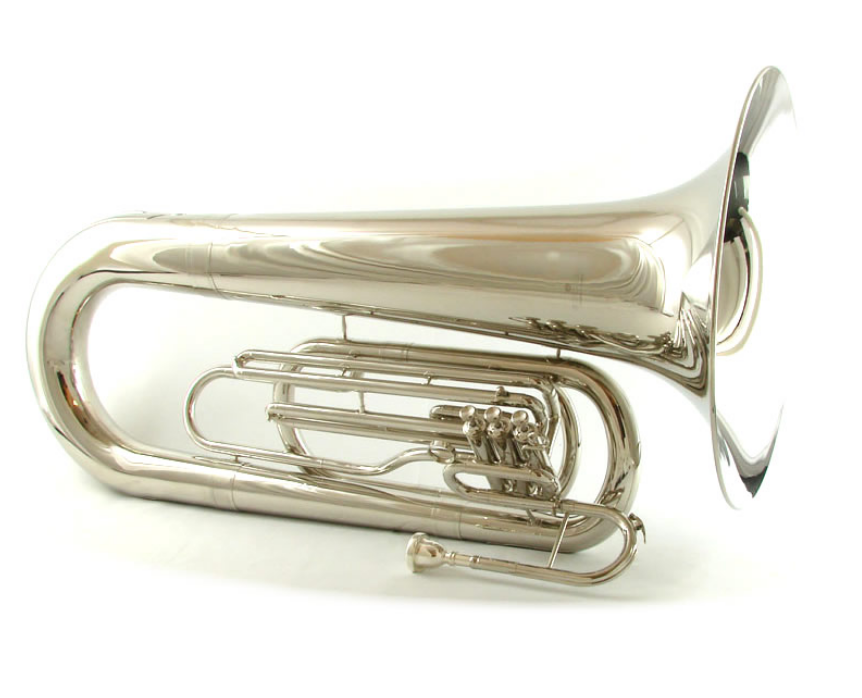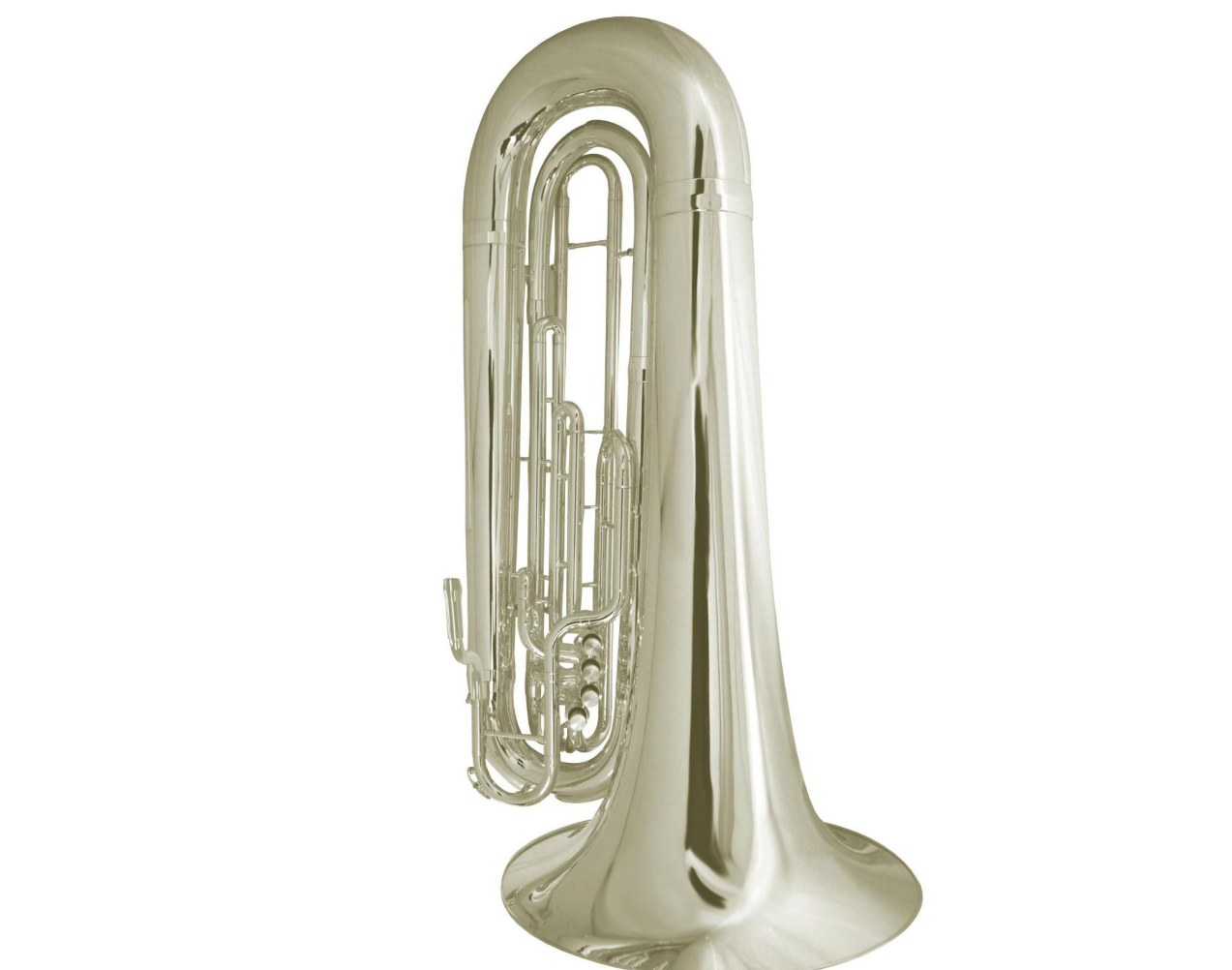- How to Learn to Play Cello Guide: The Only Guide You Need to Get Started - April 18, 2022
- How to Find the Best Trumpet Tuner - April 14, 2022
- Best Carbon Fiber Violins Guide: Why You Need the Glasser Carbon Composite Violin - April 13, 2022
So, you want to join the marching band?
Congratulations, the decision to join the marching band is a great one. During your time in marching band, you’ll find there are so many opportunities to create new memories, overcome challenges, and ways to expand upon your confidence as a musician. Don’t get me wrong, a lot of people think that marching band is easy.
There are a lot of unique challenges that you’ll discover while you’re in marching band that you never could’ve anticipated. But, all of the challenges that you face in marching band are absolutely worth the rush that you get when you pull off a nearly perfect performance.
There’s so much that I love about marching band, but one of my favorite parts was playing the marching tuba. Now, if you don’t know anything about my musical background, the first instrument I started off with was the flute. A lot of musicians will give me a questionable look when I tell them that I switched from playing the flute and instead chose the marching tuba while I was out on the field.
There are a lot of other brass instruments that I played in the marching band, but the marching tuba was one of my favorites. Even though I started off as a woodwind, brass instruments will always have a special place in my heart.
And during my years of playing the marching tuba, there was a lot that I had to learn. And if you’re the female reading this and you’re considering playing in the marching tuba, don’t give up. Even though the tuba is mostly played by men, there’s still space for you to thrive with the instrument. Don’t get intimidated or unsure of yourself just because you don’t know any other female marching tuba player.
There were a lot of frustrations that I had while I was out on the field trying to play the tuba. But, after four and a half years of marching, I finally figured out some tips and tricks. I’m here to share with you how to choose the best marching tuba because the type of tuba you play is one of the most overlooked aspects of marching.
Bottom line up front: I love the Schiller Field Series Professional BBb Marching Tuba. It’s seriously one of the best marching tubas around!
Tuba vs Sousaphone
Depending on your marching band, you may be using a marching tuba or a sousaphone. It’s important to know that a marching tuba and a sousaphone are two different instruments. But, a sousaphone and a tuba are the two largest instruments in the Brass family. A sousaphone is a type of tuba, just in the same sense that a piccolo is a type of flute.
The way that you can identify a sousaphone compared to a tuba is the physical shape, as well as the appearance of the two instruments. A sousaphone will wrap around a musician’s body, with the head of the instrument facing away from the musician. With a tuba, the Bell is a lot smaller compared to that of a sousaphone.
Also, the Bell on a tuba doesn’t project upwards very far, and instead only extend about as far up as your head. The best way that I like to describe a tuba compared to a sousaphone is that a tube of War my new of a miniature euphonium.
Now, a tuba can be used in marching band. I find that sousaphones are a lot easier to play for marching band compared to tuba, mainly because of the shape of the mouthpiece and the balance of the instrument. Since the Bell of the sousaphone point forward, I find that it’s a lot easier to balance as I’m moving all around and shifting my body. But, with a tuba, I will have it mounted on one shoulder, which makes it a little bit harder to balance out my body while I’m moving sideways or backward.
That doesn’t mean that playing the marching tuba is impossible. From my personal experience, sousaphones are a lot more common to find in marching band settings, whereas tubas are found in concert band and Orchestra all settings.
What Is a Marching Tuba?
So, since we’ve discussed the differences between a tuba and a sousaphone, it’s also important to identify the differences between a marching tuba at a concert tuba. A concert tuba has a curved LED pipe, mainly because a lot of concert Kuba musicians perform I with the tuba sitting on their lap. However, if you’re playing a marching tuba, you may want to wear a harness that helps to support the weight of the tuba. You can use a concert tuba for marching, but it isn’t something that I would recommend.
A marching tuba has a lead pipe that curves forwards and backward, which allows you to carry the tuba on your shoulder. Most marching tuba players will carry the tuba on their left shoulder, mainly because of the location of the lead pipe. However, there are models available that curves the lead pipe differently, so you can carry the marching tuba on your Right shoulder.
On a lot of marching tubas, you’ll find that there are three valves. But, if you’re used to playing on a professional level concert tuba, you can find up to 6 valves. These additional valves are offered as a way to support your intonation.
Also, the positioning of the bell on a marching tuba projects a lot better than that on a concert tuba. So again, while it’s possible for you to play in a marching band with a concert tuba, it will pose some difficulties. Playing with a marching tuba will make your marching experience a lot easier and more balanced, allowing you to focus on other things.
Marching Tuba vs Sousaphone
A lot of people think that a marching tuba and a sousaphone are the same things. However, as I’ve talked about above, this isn’t true. Personally, I find that Sousaphone is a lot easier to manage while I’m out on the field. Because of my smaller shoulders, I feel like the Sousaphone is a lot easier for me to balance, especially when compared to the marching tuba. Plus, I know that there are fiberglass sousaphones out there, which are a lot lighter and easier to carry around, especially compared to the brass models.
However, a marching tuba requires more upper body strength and arm strength than the Sousaphone. From my personal experience, the Sousaphone required more back strength end core strength to keep the instrument balanced.
How to Choose the Right Tuba
Now that you’re ready to shop around for your own marching tuba, it’s important for you to understand how to choose the right tuba. Since there are so many different types of tubas around, it can be tricky trying to choose between the different options available to find the best marching tuba for your needs. Here are my top tips for choosing the right marching tuba:
Size
First, I would highly recommend you figure out the size of the tuba you are willing to play. This will help to narrow down some of your options, depending on if you’re looking to play a smaller or a larger model. Some brands may not have a huge variety in sizing. So, figuring out what options you are willing to play on will be super beneficial to making your shopping journey a lot easier.
Type
You also need to consider the type of tuba you want to play. Does your budget only allow you a concert tuba? If that’s all you have to work with, that’s what you’ll have to work with. There’s no shame in that. But, if your budget allows you a marching tuba, there are tons of benefits to using a marching tuba over a concert tuba for marching band. So, you need to figure out which options are available to you and which type of instrument you are the most interested in playing.
Material
That’s right, the material of the tuba you’re looking into matters. A lot of beginner-level tubas will have a super dark gold brass color or a bright yellow brass color. There are some tools out there that come with 8 Rose-tone, which will help the instrument to Look a Lot less like a beginner instrument.
But those aren’t the only options available. There are plastic tubas as well. Plastic tubas aren’t super popular among musicians who are very serious about taking their careers to the professional level.
But plastic tubas are a good option if you want to find a tuba that’s super cheap and has some functionality to it. Plus, a lot of plastic tubes is come with a custom ability option, allowing you to choose unique colors that you can’t get out of a brass tuba. What I love most about plastic tubas has is how durable they are. You can drop them, kick them, leave them out in the rain; you don’t have to worry about resting or denting.
Also, there are nickel silver tubas too. But, these types of tuba are a lot harder to find and aren’t as cost-efficient as brass and plastic tubas.
Valves
The valves on the tuba you’re considering are important too. Many beginning musicians should get a tuba that comes with at least three valves. But, if you already have some experience playing the tuba, you could go with a tuba that comes with four valves or five valves.
I would only recommend that you get a four-valved tuba if you’re very serious about playing the tuba and are ready to commit to the instrument. I would only recommend five valves if you are an advanced player and are considering taking your skills to the professional level.
In addition, you also need to consider the types of valves. You can choose either between rotary or piston valves. A lot of rotary valves are found on more expensive models, so I personally would recommend the piston valves. The piston valves work the same way then the valves on a trumpet work, so you just have to move them up and down.
Mouthpiece
You should also consider the mouthpiece of the tuba that you’re looking into. Why you can always replace the mouthpiece, you can’t replace the positioning of the mouthpiece. Personally, I like to look to make sure the mouthpiece isn’t resting against my chest or against my forehead. If the mount speeds are resting against my chest and means the tuba is too small for me. But, if a mouthpiece is resting against my forehead, it means my tuba is too big.
You should always aim to make sure the mouthpiece fits comfortably against your mouth. If the tuba is in a comfortable area for your mouth, it means that it’s A good size for you. You should be sure to check how the mouthpiece fits align your body before you decide on purchasing one tuba.
Horn
You should always test out the horn of a tuba before you buy it. And while this will be a lot of work before you purchase one instrument, after work you’re putting out is totally worth it. You want to make sure that you aren’t buying a marching tuba that has a stuffie sound to it, right?
The only way you can do this is by playing around with the different tubas you’re considering. Even if the tuba is aesthetically what you’re looking for, I would still recommend that you give it a play. Sometimes, the sound of a tuba may surprise you.
New Versus Used
One of the best ways that you can ensure you’re able to afford a tuba is by buying a used instrument. There are a lot of people who go shopping specifically for infused tubas. But, figuring out whether buying a used tuba is a good idea for you or not strictly depends on what you’re looking to accomplish with your instrument. Not everyone can afford the cost of a brand new tuba.
If you are an advanced tuba player, buying a used tuba may actually be detrimental to it your musical journey. That’s because it’s hard to know everything that you need to know about the past a tuba has. If proper maintenance isn’t done on the instrument, it can affect the overall sound quality and performance capabilities of your tuba. It’s also important to know if your tuba has ever been rebuilt, which also plays a huge role in the overall sound quality of your instrument.
I would only recommend you purchase a new tuba if you’re aware of what your musical journey is going to be. If you know you’re going to dedicate yourself to your instrument, I would highly recommend you stay away from a used tuba. The only way that you can know exactly what you’re getting from an instrument is to buy a brand new tuba.
Durability
I also think that durability should be one of the top priorities in your shopping journey. When you’re marching with the tuba, you’re going to drop your instrument. There are times when you may be marching on wet grass, you slip, and your instrument takes a tumble. When you’re loading on the band bus, you may drop your instrument, and it could get dented. There’s no way around your marching tuba taking a beating. It’s just part of being in the marching band.
That’s why it’s so important for you to buy a tuba that will be able to withstand some wear and tear. You shouldn’t buy a tuba that isn’t going to be able to get knocked around. Honestly, the best way that you can know if your tuba is durable is by reading around online and checking out reviews. There are a lot of people out there who are more than willing to share their personal experiences with the durability of the instrument just to ensure that you have the right expectations for the instrument.
A lot of these reviews will give you insight on important factors like how easy the valve assembly is, the overall maintenance expectations you should have for the instrument, maintenance tips for the specific model, how durable it is, and the overall sound quality of the instrument.
Balance
For me, balance is very different between each and every tuba. If there are some tubas that are a lot heavier towards the front and others that are heavier towards the back. But, no matter where the tuba wears its weight, it’s super important to make sure that you invest with it’s equally balanced. There’ve been too many times when I was so caught up in trying to balance the weight of my instrument that I didn’t pay attention to my surroundings, resulting in accidents.
Plus, sometimes, the weight of my instrument and the poor balance that came with it would even prevent me from being able to perform certain maneuvers while I was out on the field. So, that’s why I would highly recommend that you invest in a tuba that’s equally balanced, so you don’t face the same challenges as I did.
Pricing
The tuba is a huge instrument, and there are a lot of materials that are needed to make it. The pricing of the tuba is determined by the bore of the instrument. Plus, the pricing of your tuba will vary by the manufacturer as well. If you decide to buy a smaller sized bore because it’ll be a lot easier for you to handle, you shouldn’t expect this to be nearly as expensive as buying a tuba with a larger bore.
If you have the option to go with a smaller size bore, I personally would recommend it. It’ll make the tuba a lot easier to physically handle, and it won’t be as expensive of an investment.
My Top Marching Tuba Recommendations
I have listed my top marching tuba recommendations based on the selection criteria I’ve used above. Plus, all of the tubas that I’ve included in this guide are tubas that I have personally used throughout my time in the marching band. There isn’t a single tuba almost list that I haven’t personally used and haven’t had success with.
Also, keep in mind that just because it’s a tuba you’re using for marching band doesn’t mean that you can’t find some other uses for it. There are some marching tubas in this list that I recommend that are also great as concert tubas.
Jupiter 378 Series B-Flat Tuba
This is a marching tuba that I would only recommend if you were looking to invest in the best of the best. Honestly, this tuba was the best tuba that I’ve ever played in my life. There are no other tubas that I think could ever come close to the dream that this was to play. This tuba is made of brass and comes with a lacquered finish.
It’s a three-quarter size tuba, so I didn’t have any difficulties holding on to it to play. I love how compact the size was because it made it super easy for me to hold onto and keep a good grip on, even while I was marching around. And if you’ve ever been to bandcamp before, you know how sweaty it can get while you’re marching out in the field in the middle of the day. Even while my hands were sweating when I was marching around, the compact size of this tuba was super easy to hold on to.
Plus, I loved how tightly wrapped this tuba was. It gave such a sweet, beautiful tone, and playing dynamic contrast on the best tuba was super easy to accomplish. And I want to give this tuba even more props, because I found all of those things very easy to accomplish, and I have played this tuba while I was a beginner. I did later come back to this tuba when I became more advanced, but even as a beginner, I found this to be easy the play. I only complain about this tuba is how expensive it is.
Jupiter 1100 Quantum Series
Oh, how I loved the beauty of a silver lacquered tuba. There’s just something so breathtaking about seeing a silver to buy out on the field and not seeing something as boring and commonplace as gold lacquer. And I love the silver lacquer on this tuba, as I believe it would be beautiful to see in a concert band too. But, the physical appearance of this tuba isn’t all that there is to be found. The sound is absolutely breathtaking, too, especially for it being a beginner’s tuba.
You can find three stainless steel pistons with this tuba. When I was playing on it says to put, I was really impressed with how fast the action was. The .689-inch bore was very comfortable to play on. I had no problem playing this tuba as a beginner and as an advanced tuba player, so it’s really quite a universal instrument.
The biggest complaint that I had about this marching tuba was how heavy it was. This is one of the heaviest who was I ever marched with, which was surprising, especially because the stew is marketed towards beginners. So, if you already have previously marked with a tuba, I would prepare myself to expect more weight from this tuba than anything that you played with before.
Schiller Field Series Professional BBb Marching Tuba
If you are looking for a professional-grade tuba that was made for marching band, look no further than the Schiller field serious professional BBb marching tuba. This is a nickel-plated tuba that has a stunning sound, but I would expect no less from a professional-grade tuba.
But, what you may find most surprising about that tuba is that it’s made with such high quality; I personally consider this a professional-grade tuba. The shocking part is that it cost less than $1,200. It’s one of the cheapest tubas in the industry alone, let alone being a marching tuba.
This is another 3/4 size marching tuba and was super lightweight. I was honestly shocked at how lightweight this tuba was when I first picked it up. I had been playing around with plastic and fiberglass models, and I didn’t believe that this model was made from brass when I first picked it up.
So, it was super easy for me to carry around on my shoulder, and I didn’t feel sore afterward. Plus, I love how evenly it felt like the weight of the tuba was just first when I was carrying it around in my shoulder. Even better, I love how small the body was but how big and round the sound was. The bore measures at .630″.
King K50 4-Valve Marching Tuba
This is another professional-grade matching tuba and I would strictly only recommend this one to advanced musicians, simply because it comes with four valves instead of three. The fourth valve added on provides you with improvement and intonation and different fingering options for you to play around with.
What I thought was supposed to be used with this tuba is the tuning guide that comes installed with his instrument. This tuning guide allows you to tune each and every note you’re playing to ensure that your pitch is perfect, despite your lack of breath support, the temperature, how you’re positioned, or any other outside causes that may happen while you’re out on the field.
I love the amazing bracing that’s on it this to back because it really shows that this instrument was made to last and withstand some bumps and bruises. Even better, there’s also a technology that was used in the creation of the tubas to ensure that you’re still able to see out of the left part of your body without having your review blocked by the tuba. I know that there are many times that this would have come in handy when I was out on the field, so I’m jealous that this is now an option for professionals.
FAQs
Answer: Fevers are so expensive because there’s so much metal needed to make them. On average, there are about 15 to 16 feet of metal piping that’s reused for each tuba that’s created. All of that piping is super expensive. Plus, there’s a lot of labor and skill that goes into making tubas. The more expensive a tuba is, the more skill and labor was required to make it, meaning that there was more time devoted to the instrument. All of these factors contribute to the higher cost.
Answer: Personally, there are only a few accessories that I would recommend. If you’re using a concert tuba for marching band, A harness is an absolute must. In addition, I would also recommend a mute, valve oil, and a tuba lyre.
Answer: If you have no prior musical experience, yes. If you’ve only played Smallwood wins before, yes. But, just because it’s a difficult instrument to merge with doesn’t mean that it’s impossible. I found that it was really difficult to play marching band because of how heavy it was. It’s not the hardest brass instrument to learn, but it is very difficult to master simply because of how much your lung capacity and embouchure affect the overall sound quality of your tuba.
And both of those things are very important while you’re out on the field and supporting the bass section of whatever you’re playing on the field.
Conclusion
Overall, I would highly recommend the Schiller Field Series Professional BBb Marching Tuba. It’s super lightweight, is beautiful to look at, has an amazing sound, and is very affordable. It’s a grey tuba for both beginners and professionals alike. How the difference in the sound comes across really just depends on your Technique and how much lung support you’re willing to put behind your sound.
It’s so affordable, too; it’s hard to find something to complain about when you’re able to get an outstanding quality marching tuba for so cheap. I love this tuba and personally always go back to play around with it; I’m always trying to see if there’s anything this tuba can’t do. So far, I haven’t been able to discover anything.
What tuba would you highly recommend on this list?
Looking for more interesting readings? Check out:

